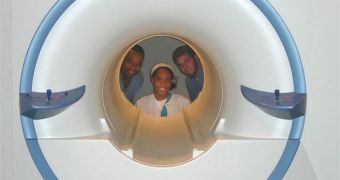According to a new scientific investigation by British researchers, it would appear that teenagers who suffer from conduct disorder (CD) tend to exhibit differences in the structure of the developing brain, when compared to peers who do not display this type of negative behavior.
The study was carried out on a group of antisocial, aggressive teen boys. The test subjects were placed inside magnetic resonance imaging (MRI) machines, and researchers then took a look at the structure and organization of their brains.
It was found that the differences in structure CD sufferers display may in fact be linked to the onset of their condition. The work was conducted by neuroscientists at the University of Cambridge and the MRC Cognition and Brain Sciences Unit.
The science group reveals that the same differences were found regardless of the age at which CD symptoms first appeared and developed. This finding challenges an old theory psychologists used to explain conduct disorder.
In the past, CD symptoms were almost exclusively explained through the need the teens felt to imitate peers that were badly-behaved. But the new conclusions show that the roots of this disorder might run deeper than first calculated.
Details of the new study appear in the April 1online issue of the esteemed publication American Journal of Psychiatry. The work was made possible by funds secured from the Wellcome Trust and the Medical Research Council.
Official statistics place the incidence of CD cases in the UK teen population at 5 out of 100 individuals.
The situation is made more complex by the fact that teens who suffer from this condition are also at an elevated risk of developing additional physical health problems and mental issues later in life.
MRI investigations revealed that two brain regions involved in managing empathy, perception, and the ability to recognize when other individuals are in danger, were considerably smalled in teens suffering from CD than in their healthy peers.
Experts say that these areas, the amygdala and the insula, were found to be abnormal in both kids and teens. The severity of behavior problems was also directly linked to the volume of the insula.
“Changes in gray matter volume in these areas of the brain could explain why teenagers with conduct disorder have difficulties in recognizing emotions in others,” University of Southampton expert Dr. Graeme Fairchild explains.
“Further studies are now needed to investigate whether these changes in brain structure are a cause or a consequence of the disorder,” the investigator goes on to say.
“We hope that our results will contribute to existing psychosocial strategies for detecting children at high risk for developing antisocial behavior,” adds University of Cambridge professor of child and adolescent psychiatry Ian Goodyer.

 14 DAY TRIAL //
14 DAY TRIAL //